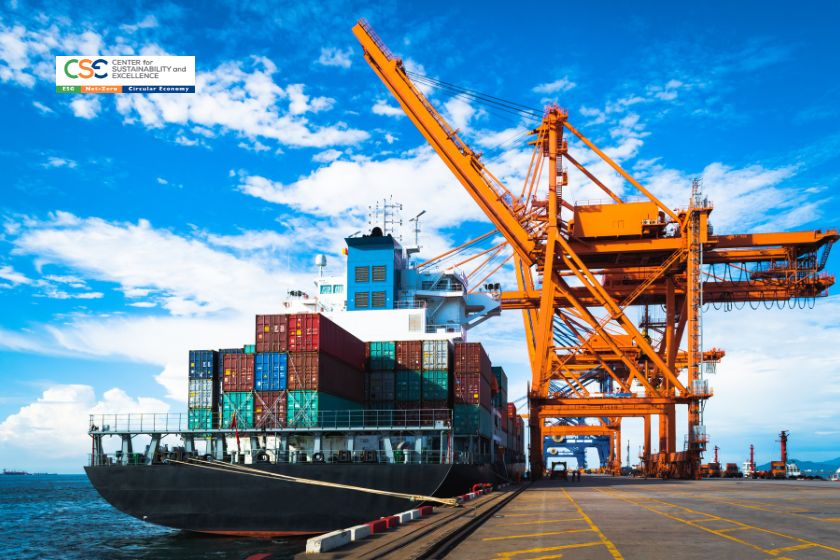The critical importance of managing hidden risks in global supply chains has become increasingly apparent to businesses, driven by the disruptions caused by the COVID-19 pandemic, geopolitical conflicts, and natural disasters. These vulnerabilities have highlighted the pressing need for greater transparency and control, particularly in links located in emerging markets. Often, this lack of transparency leaves corporations in the dark about the adverse impacts their supply chains have on the environment, employees, and society.

The Growing Demand for Accountability
Shareholders and stakeholders are increasingly demanding greater accountability from companies regarding their environmental, social, and governance (ESG) impacts. Industry experts argue that true sustainability can only be achieved through collaboration with suppliers to adhere to ESG principles.
Addressing ESG issues in supply chains has largely been driven by reputational risks until now. A tarnished corporate image can lead to declining revenues, profits, and valuations, as well as hindered access to capital and reduced appeal to potential employees. According to Boston Consulting Group (BCG) data, 40% of Millennials consider ESG criteria when choosing employers, making this a significant factor in talent acquisition. Recent BCG studies indicate that companies managing ESG issues enjoy profit margins that are one to three percentage points higher and stock market premiums of over 10%.
Legislative Push for ESG Compliance
In response to rising ESG concerns, several countries, especially in Europe and North America, are enacting new laws or rigorously enforcing existing regulations. These laws aim to safeguard workers throughout the supply chain by making the due diligence process mandatory and imposing stricter obligations and sanctions on businesses.
The EU’s Corporate Sustainability Due Diligence Directive (CSDDD), ratified by the European Commission in 2022 and adopted by the EU Parliament in April 2024, is one of the most comprehensive initiatives. It requires both EU and non-EU companies operating in the EU to take responsibility for the environmental and social impacts of their value chains, including suppliers and sub-suppliers. Non-compliance can result in fines of up to 5% of global turnover. The directive builds on previous legislation like the UK Modern Slavery Act (2015), Australia Modern Slavery Act (2019), and Germany’s Supply Chain Due Diligence Act (2023).
In the U.S., legislation such as the Uyghur Forced Labor Prevention Act (2021) has led to significant import restrictions. For example, in 2022, the U.S. banned sugar imports from the Dominican Republic’s Central Romana Sugar and detained over 3,000 shipments of solar panels from China due to forced labor concerns.
Mitigating ESG Risks
Addressing ESG issues in supply chains is challenging for several reasons. Supply chains are becoming increasingly complex, spanning multiple countries with varying legal, regulatory, and human rights practices. The deeper the supply chain, the poorer the visibility, increasing the likelihood of violations, particularly among lower-tier suppliers.
To tackle these challenges, U.S. companies can follow the following practical strategies:
- Create Transparency: Develop an in-depth understanding of supply chains, including sourcing and manufacturing processes, to identify potential ESG risks.
- Calculate Risk Scores: Assess ESG risks by assigning scores based on the probability and severity of adverse events. This helps manage the likelihood of violations effectively.
- Develop Risk-Specific Measures: Interact closely with suppliers to identify risks and implement mitigation measures, including standardized toolboxes and ESG scorecards.
- Define New Cornerstones: Analyze current ESG approaches and transition to an operating model that places ESG risk management at its core, involving all relevant functions.
- Create a Center of Excellence: Establish a central node to ensure consistency in ESG guidelines, performance tracking, and supplier engagement, and to catalyze internal collaboration.
- Monitor, Audit, and Campaign: Use digital systems and periodic audits to monitor supplier performance, conduct in-person audits, and collaborate with external organizations to raise awareness of ESG issues.
- Regulatory Mapping: Conduct thorough mapping of applicable regulations to understand the full scope of ESG requirements. This includes identifying overlapping and conflicting standards across jurisdictions.
- Leveraging Existing Systems: Utilize existing data collection and due diligence processes to streamline compliance efforts. This reduces redundancy and leverages established capabilities.
- Engaging Expertise: Collaborate with internal and external experts, including legal advisors, sustainability consultants, and supply chain auditors, to develop and implement effective ESG strategies.
The State of Emissions Reporting
The MSCI Net-Zero Tracker report reveals a marked improvement in emissions reporting over the past two years. Globally, nearly 60% of companies now disclose their Scope 1 and 2 emissions, up from 44% two years ago. Reporting on Scope 3 emissions has seen even more rapid growth, with 42% of companies now disclosing these emissions, compared to just 25% in 2022. Despite this progress, U.S. companies are struggling to keep up. Only 45% of U.S. public companies report on Scope 1 and 2 emissions, and a mere 29% report on Scope 3 emissions. In contrast, 73% of companies in developed markets outside the U.S. report on Scope 1 and 2 emissions, and 54% on Scope 3 emissions.
The year 2024 marks a significant turning point for supply chain management as organizations in the U.S. and beyond grapple with new regulations and heightened social responsibilities. By embracing upcoming regulations, leveraging advanced technologies, and committing to transparency and accountability, companies can navigate these challenges and create more sustainable supply chains. As the decade progresses, the ability to effectively manage these challenges will define the success of U.S. companies in the global market, positioning them as leaders in responsible and sustainable business practices.
Do you want to understand the hidden risks in supply chains, meet shareholder and stakeholder demands effectively, mitigate ESG risks and improve emissions reporting? Then take this opportunity to attend our upcoming ESG Programs:
- Europe | Certified Sustainability (ESG) Practitioner Program, Leadership Edition 2024, Digital Version with Live Zoom Sessions, on June 13-14 & 17, 2024
- USA | Certified Sustainability (ESG) Practitioner Program, Leadership Edition 2024, Digital Version with Live Zoom Sessions, on September 26-27 & Oct.1, 2024
- CANADA | Certified Sustainability Practitioner Program, Leadership Edition 2024, Digital Version with Live Zoom Sessions, on October 24-25 & 28, 2024
Reach us at [email protected] for seat reservations and at [email protected] for group discounts and in-house training opportunities!






